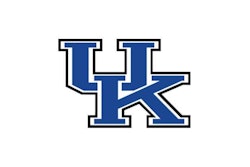Copyright 2017 The Evansville Courier Co.
All Rights Reserved
Evansville Courier & Press (Indiana)
EVANSVILLE — Want to be in an awkward spot? Try the sideline of an Indiana high school football game in the second half of a blowout.
Either sideline.
Head coaches on the winning side prefer not to ask for a running clock because they don't want to come across as disrespectful to the opponent. Coaches on the other side of the field don't want to wave the white flag for fear it would convey a sense of surrender to their players.
Officials can suggest it, but who wants to be in those shoes? If only there was a mercy rule that took the decision out of their hands.
"It would draw a line in the sand because there are some coaches who don't believe in a running clock," Boonville coach Darin Ward said. "It puts everyone in a tough situation from the coaches to the officials. It'd be nice if there were a clear rule."
At least 35 states in the country have adopted a continuous clock that — once a team has a large enough lead — operates on most plays when it would normally stop. Indiana could soon join that group, according to an Indianapolis Star report published Sunday.
In January, the Indiana Football Coaches Association will submit a proposal to the IHSAA that will include a mercy rule, as well as an idea for seeding the top two teams in each sectional. IHSAA commissioner Bobby Cox told the IndyStar last week that a mercy rule has to be passed before he would consider seeding the tournament.
If passed — the vote would come later in the spring — either or both proposals would be tested on a one-year trial for the 2018 season.
The threshold for a running clock would be after halftime and once a team leads by 42 points (or 35 in the fourth quarter). Coaches from the Southern Indiana Athletic, Big Eight and Pocket Athletic conferences are in favor of the proposal, with a caveat of its own.
"There's definitely going to be a stipulation with playing time and legislating quarters the kids (can play)," said Bosse coach Eric Schnur, a chairman for IFCA Region 9. "We've submitted a proposal that clarifies if a kid plays in two quarters in the second half of a varsity game, it shouldn't disqualify them from playing a full game on (junior varsity)."
A change to the IHSAA's quarters rule, which limits players to five quarters of game action per week, is viewed as a must in order for the implementation of a continuous clock. The coaches argue that playing two quarters with a running clock is the same as one quarter with a normal clock.
The game time flies with a running clock, which is meant to keep the score from being even more lopsided.
Gibson Southern football has been synonymous with blowouts the past five seasons with coach Nick Hart. Since 2013, the Titans have beaten 45 regular-season opponents by an average margin of 43.5 points. It's always a balancing act for Hart when deciding whether to leave his starters in or rest them and worry about the quarter rule later.
"For Warren Central and Ben Davis, it's not an issue," Hart said. "But for us, playing a JV and freshman schedule, you face some choices in the third quarter whether to break the quarter rule or get your starters out and not run up the score. That would help blowouts as much as anything."
Hart and Schnur were at the IFCA board meeting Saturday in Indianapolis when the proposals were voted on.
Among other details for the proposed mercy rule is that the clock would not revert back to normal if the losing team cuts the deficit back under the 42- or 35-point threshold. In Kentucky, the rule — instituted in 2001 and revised in 2013 — goes into effect once the margin reaches 36 points and also continues to run.
"We had one of the best comebacks I've ever seen and that was 28 points at Charlestown (in a 2012 Class 3A regional championship)," Hart said. "You don't really ever hear of teams coming back from more than that at halftime, so I think 42 and 35 are good numbers."
The hope, Schnur said, is that the new rule is taken as one piece or not at all.
"When you don't have a mercy rule and leave it up to the coaches to make the decision, you leave the door open for kids to begin to doubt their coaches believe in them and I think some of that exists," he said. "A mercy rule eliminates that.
"If you don't want the clock to run, then you have to keep the score under a certain threshold."
Read More of Today's AB Headlines
Subscribe to Our Daily E-Newsletter
Terms and Conditions Privacy Policy































